2013 August Monthly Report
Highlights
The continuing warm dry weather at the start of the month encouraged the wildfires scattered throughout the state, especially in the Interior. The 3rd saw the historic Gold Dredge No 3 destroyed by fire, as well as a small wildfire start at mile 47 of the Steese Highway, that was quickly contained. Despite the increased danger, firewood cutting was allowed to resume in the Fairbanks area on the 3rd. The burn ban from July in Anchorage was lifted on the 8th due to the substantial rain during the proceeding week. As the dry conditions continued in the Interior, wildfires were stirred up and smoke was advected into the Fairbanks area during the second week of August. Conditions were so bad that a warning was issued for extreme fire danger in the Interior on the 9th. The 11th saw a new fire erupt 24 miles east of the Stuart Creek 2 fire near Fairbanks and was fought aggressively.. The Tabert Lake fire in the Copper River Basin jumped to 1,200 acres on the 15th and was also fought with firefighters and airplanes to protect private property. By the 20th, cooler, wetter, weather in the Interior had dampened the fire activity, and by the 26th firefighters were moving out of Alaska to the Lower 48 to assist with fighting efforts there. The 20th also saw the fireworks ban lifted in the Fairbanks Borough. It is interesting to note that the fire season was “good” as far as the weather conditions were concerned. The climate conditions had far above normal summer temperatures similar to 2004, however, while in 2004 6.4 million acres burned, this summer season only 1.3 million acres burned, which is still above the long term mean of near 1 million.
Total rainfall of 2.88" on the 9th and 10th in Valdez caused the Lowe river to cover part of the Richardson Highway between miles six and seven. Wet weather prompted flood warnings for small streams in the Anchorage area on the 19th. Then the heavy rains in the Interior on the 20th hit Atigun Pass on the Dalton Highway as a blizzard. The first freezing temperatures were noted in the Fairbanks area on the 25th and 26th, but the Fairbank's Airport only had a low of 34°F on the 25th. The dry summer may have resulted in a bumper berry crop in the Fairbanks area, but negatively impacted hay production. The hay crop was estimated to be about les than half of normal for Fairbanks, Delta Junction and Palmer areas.


